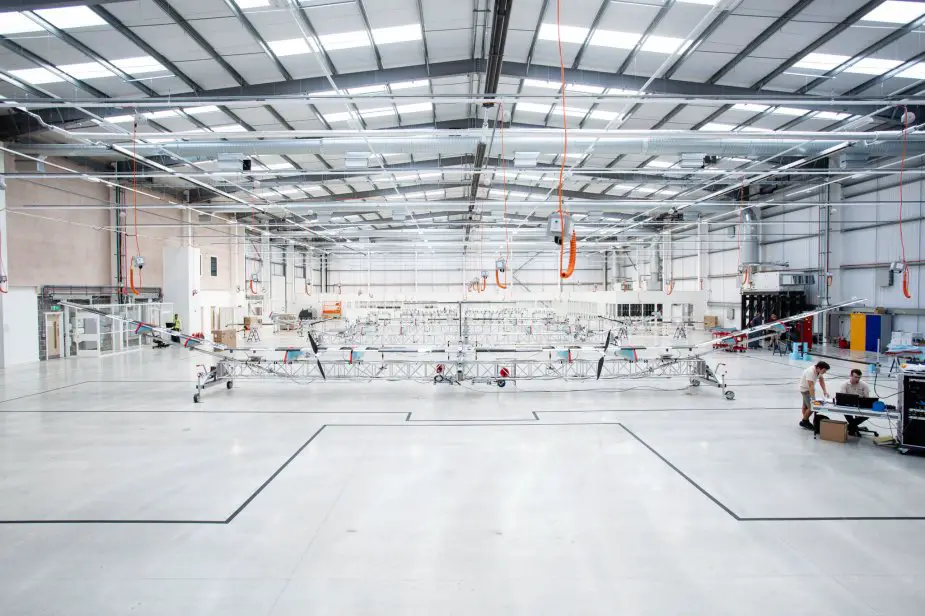Breaking news
Airbus opens first Zephyr HAPS serial assembly line.
Airbus Defence and Space has unveiled the new Zephyr S HAPS (High Altitude Pseudo-Satellite) to the world at Farnborough Air Show yesterday morning. The Zephyr S is the first production aircraft of the Zephyr programme, previous Zephyr units being Research and Development prototypes.
 A view of Airbus Kelleher facility, which represents the first serial HAPS assembly line worldwide
A view of Airbus Kelleher facility, which represents the first serial HAPS assembly line worldwide
(Credit: Airbus Defence and Space)
Zephyr is the world’s leading, solar–electric, stratospheric Unmanned Aerial Vehicle (UAV). It harnesses the sun’s rays, running exclusively on solar power, above the weather and conventional air traffic; filling a capability gap complimentary to satellites, UAVs and manned aircraft to provide affordable and persistent local satellite-like services.
Named after the late Chris Kelleher, the inventor of Zephyr, the opening of production facilities is part of a significant focus by Airbus on the Zephyr programme. The Kelleher facility represents the first serial HAPS assembly line worldwide.
“Today represents a significant milestone in the Zephyr programme. The facility is home to the world’s leading High-Altitude Pseudo Satellite and will be a showcase location, linking to our operational flight bases around the world. The Zephyr S aircraft is demonstrably years ahead of any other comparable system and I am beyond proud of the Airbus team for their unrivalled success. Today we have created a new future for stratospheric flight”, said Dirk Hoke, Chief Executive Officer of Defence and Space.
This programme milestone comes as the Zephyr aircraft is currently flying after having departed for its maiden flight from Arizona, USA a few days ago. This flight is being supported by both the UK and US governments and reflects the UK Ministry of Defence’s position as the first customer for this innovative and potentially game changing capability.
This maiden flight of the Zephyr S aims to prove and demonstrate the aircraft capabilities, with a landing date to be confirmed once the engineering objectives have been achieved. Until today, the Zephyr aircraft has logged almost 1,000 solid hours of flying time.
Added Sophie Thomas, Head of the Zephyr programme at Airbus: “Firstly, I would like to thank Defence Equipment & Support, the procurement arm of the UK MOD for their continued support of the Zephyr programme. Zephyr will bring new see, sense and connect capabilities to both military and commercial customers. Zephyr will provide the potential to revolutionise disaster management, including monitoring the spread of wildfires or oil spills. It provides persistent surveillance, tracing the world’s changing environmental landscape and will be able to provide communications to the most unconnected parts of the world.”
In future, Airbus will be flying Zephyr S from their new operating site at the Wyndham airfield in Western Australia. This has been chosen as the first launch and recovery site for the Zephyr UAV due mainly to its largely unrestricted airspace and reliable weather. The site will be operational from September 2018.


























